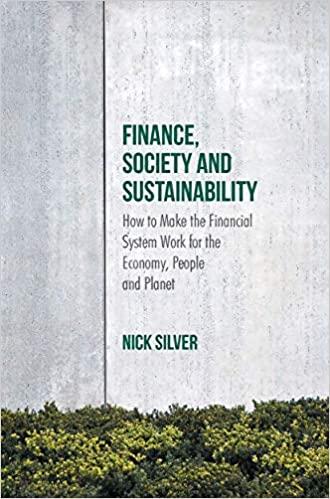Question
Bank A has the following balance sheet information (in millions): Assets Liabilities and Equity Rate-sensitive assets $50 Rates-sensitive liabilities $75 Fixed-rate assets 150 Fixed-rate liabilities
Bank A has the following balance sheet information (in millions): Assets Liabilities and Equity Rate-sensitive assets $50 Rates-sensitive liabilities $75 Fixed-rate assets 150 Fixed-rate liabilities 100 Net worth 25 Total assets $200 Total liabilities and equity $200 Rate-sensitive assets are repriced quarterly at the 91-day Treasury bill rate plus 150 basis points. Fixed-rate assets have five years until maturity and are paying 9 percent annually. Rate-sensitive liabilities are repriced quarterly at the 91-day Treasury bill rate plus 100 basis points. Fixed-rate liabilities have two years until maturity and are paying 7 percent annually. Currently, the 91-day Treasury bill rate is 6.25 percent. The bank is a price taker in both the fixed-rate market at 9 percent and the rate-sensitive market at the T-bill rate plus 1.5 percent. A securities dealer has a large portfolio of rate sensitive assets funded with fixed-rate liabilities. The dealer is a price taker in a fixed-rate market paying 8.5 percent and a floating-rate market paying the 91-day T-bill rate plus 1.25 percent. All interest is paid annually.
3.A. What is the interest rate risk exposure to the securities dealer?
3.B. How can the bank and the securities dealer use a swap to hedge their respective interest rate risk exposures? 3.C. What are the total potential gains to the swap?
3.D. Consider the following two-year swap of cash flows: An annual fixed-rate cash flow of 8.6 percent in exchange for a floating-rate cash flow of T-bill plus 125 basis points. The swap intermediary fee is 5 basis points. How are the swap gains apportioned between the bank and the securities dealer if they each hedge their interest rate risk exposures using this swap?
3.E. What are the realized cash flows if T-bill rates at the end of the first year are 7.75 percent and at the end of the second year are 5.5 percent? Assume that the notional value of the swap is $107.14 million. 3.F. What are the sources of the swap gains to trade?
3.G. What are the implications for the efficiency of cash markets?
Step by Step Solution
There are 3 Steps involved in it
Step: 1

Get Instant Access to Expert-Tailored Solutions
See step-by-step solutions with expert insights and AI powered tools for academic success
Step: 2

Step: 3

Ace Your Homework with AI
Get the answers you need in no time with our AI-driven, step-by-step assistance
Get Started


